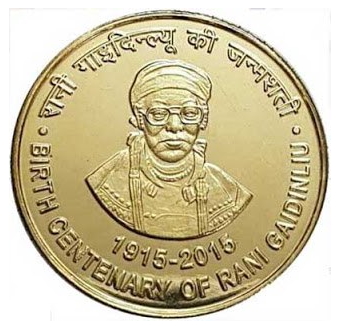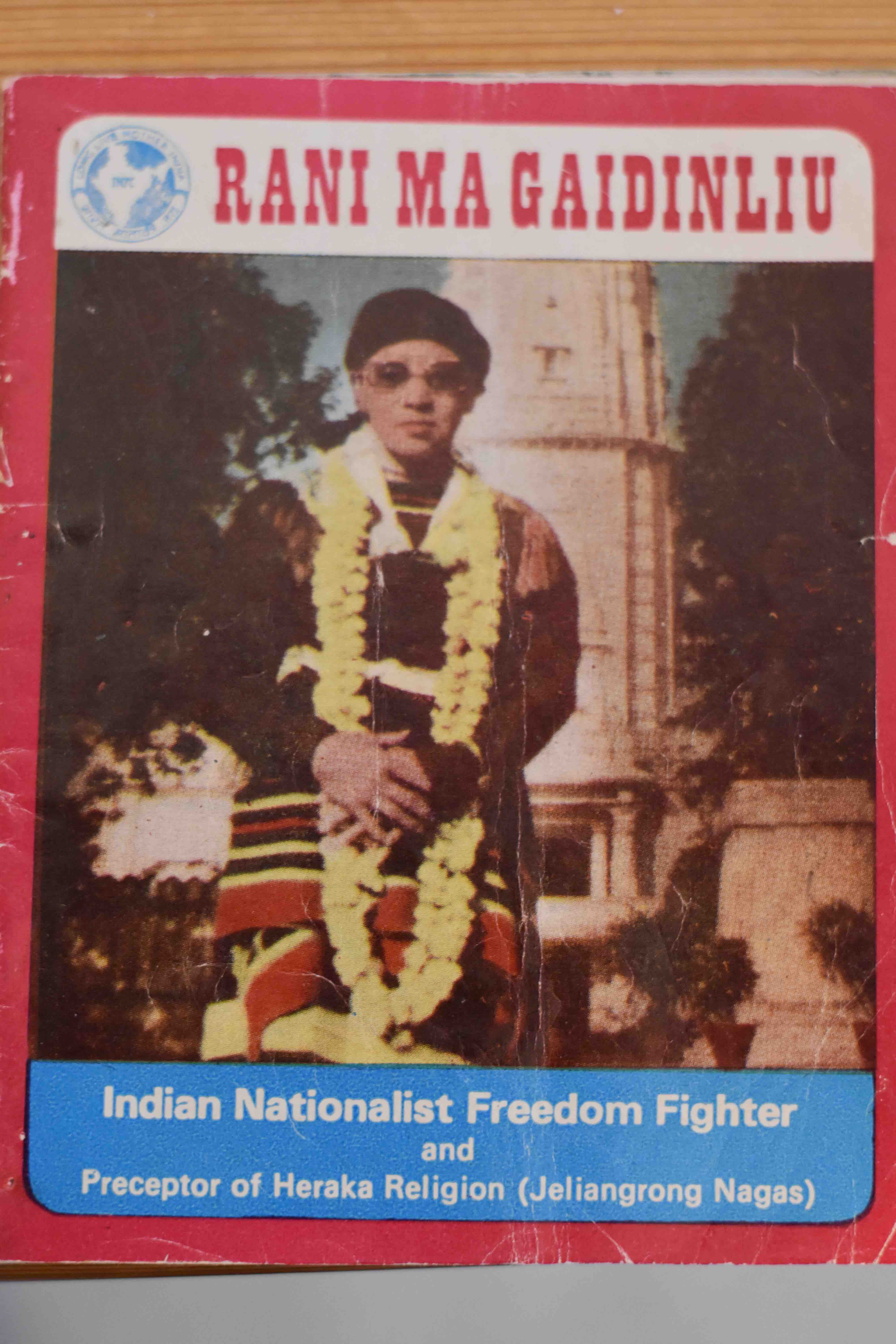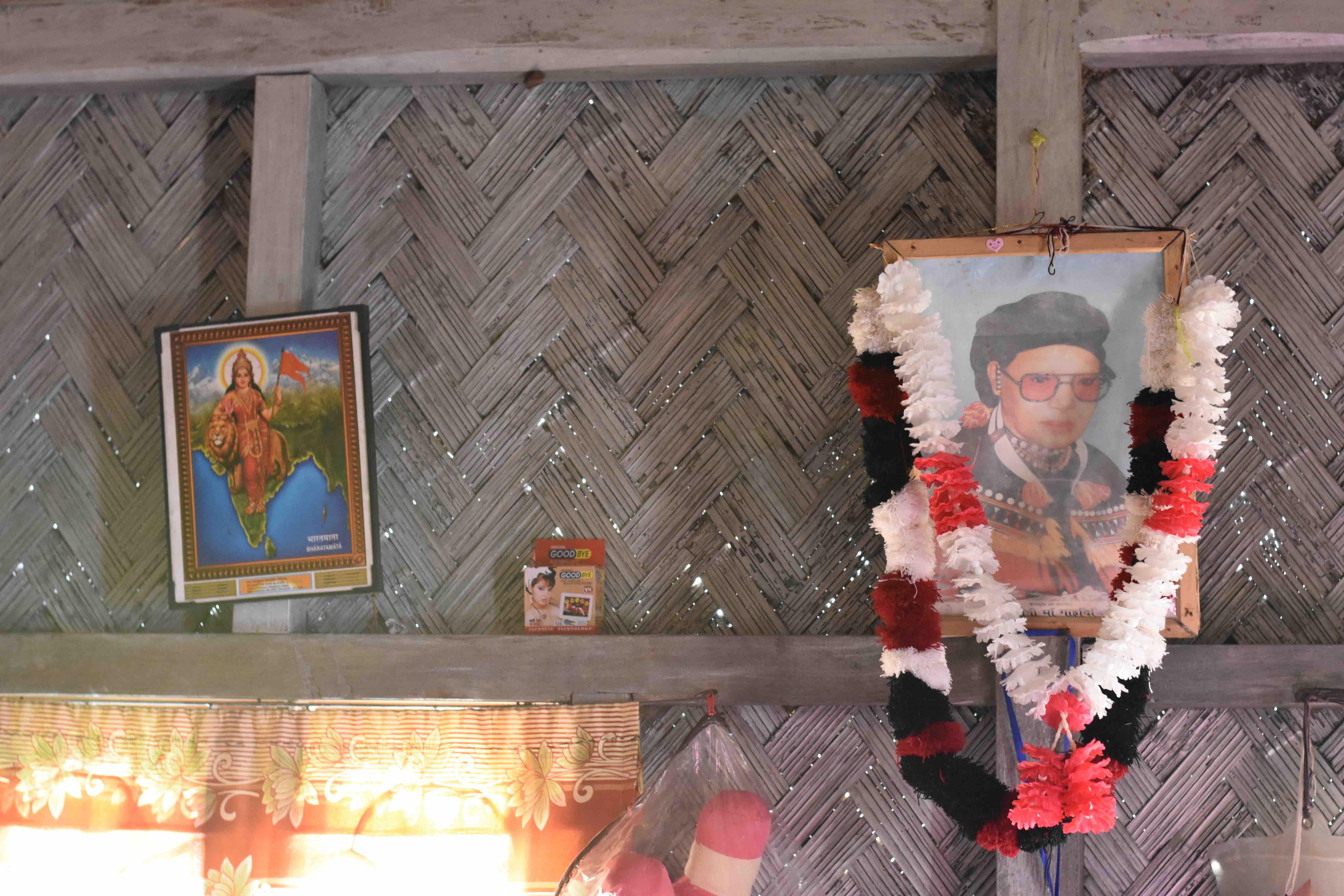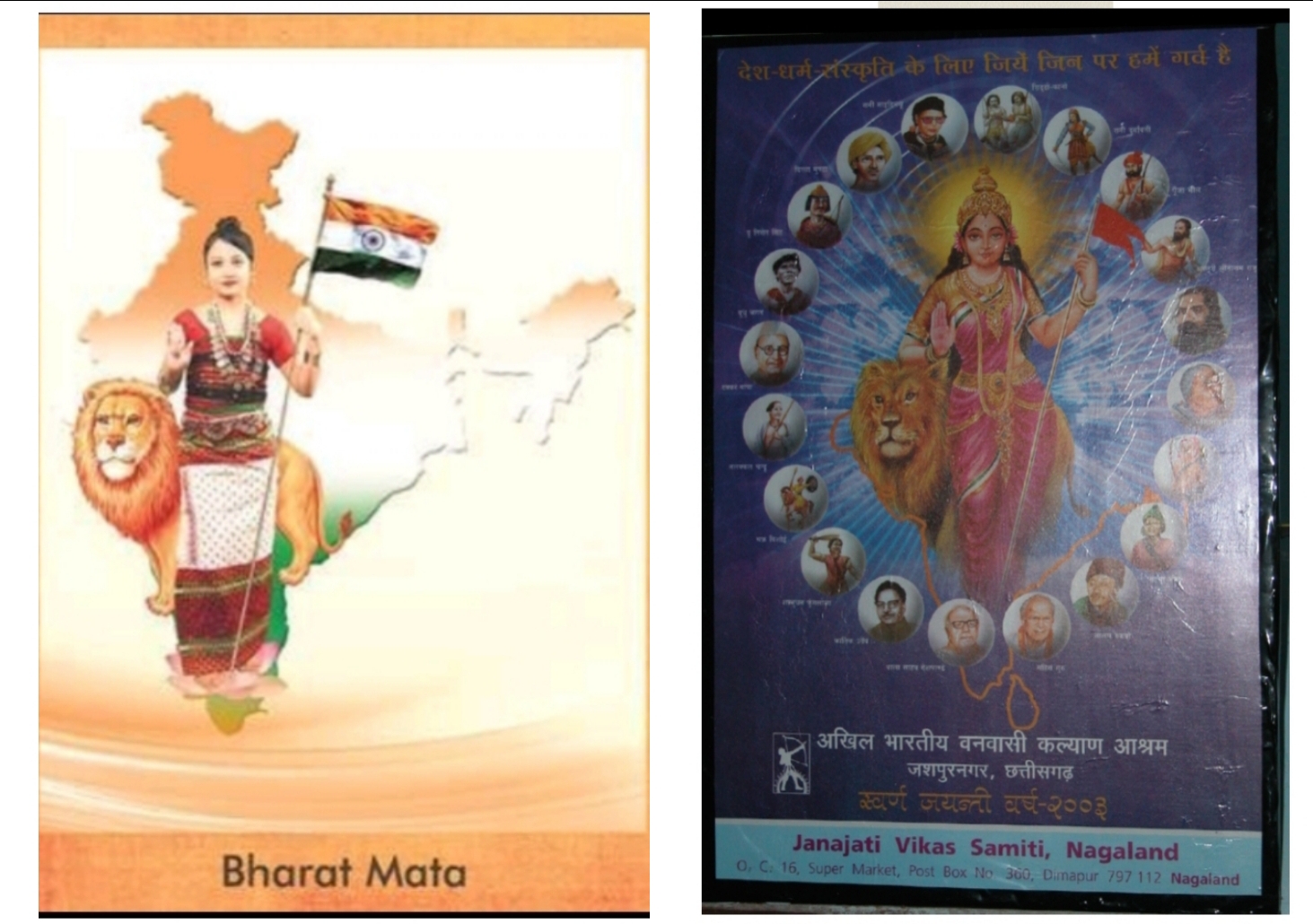In August 2015, Prime Minister Narendra Modi and the chief ministers of Nagaland and Manipur gathered at New Delhi’s Vigyan Bhawan to celebrate the birth centenary of Rani Gaidinliu. The celebrations were significant, not least because it was a rare instance when a tribal leader from the North East was felicitated and celebrated as a national icon, over and above other — often Christian — leaders from the region.
The event, organised by the Vishva Hindu Parishad (VHP) and the Vanvasi Kalyan Ashram (VKA), both members of the Sangh Parivar, highlighted the extensive influence that Rani Gaidinliu wielded and the importance of her iconography in post-Independence India. But Rani Gaidinliu’s involvement with the larger Hindu society also shows a different side to her, which is hard to penetrate and understand.
Gaidinliu’s stance ran counter to the Naga nationalist imagination, which has had strong Christian undertones over the years [...] For much the same causes, Rani Gaidinliu’s history and what she represents have appealed to the Sangh Parivar
A community organiser from Nagaland present at the centenary celebrations in Delhi was astounded by the number of people she met there who were aware of Gaidinliu’s life history and had visited Lungkao, her birthplace, as an act of pilgrimage. The organiser’s reaction was not unusual. In Nagaland itself, personalities like Angami Zapu Phizo (1913-1990), the pre-eminent leader of the Naga national movement, are seen as figures worthy of reverence. Gaidinliu is not necessarily unknown, but her status as a non-Christian in a Baptist Christian dominated territory polarises opinions.
In 2015, when the union government planned to inaugurate a Rani Gaidinliu Museum and Library in Kohima, controversy erupted in the state capital. Various organisations like the Angami Public Organisation, whose customary jurisdiction is in Kohima, and the Nagaland Baptist Church Council, the central governing church body, opposed building the museum (Longkumer 2020).

During her lifetime, Gaidinliu was interested in reviving the traditions of her Zeliangrong people (comprising the Zeme, Liangmei, and Rongmei tribes, who live in the present states of Assam, Nagaland and Manipur). She was critical of the Naga Christian nationalists and missionaries, whom she saw as imposing an alien religion. Gaidinliu’s stance ran counter to the Naga nationalist imagination, which has had strong Christian undertones over the years and requires its leaders to be Christian.
For much the same causes, Rani Gaidinliu’s history and what she represents have appealed to the Sangh Parivar, keen as they are to engage with people who shared in their idea of India and who fitted within their religious (non-Christian) and political (pro-Indian Union) orbit.
A 'Naga raj'
When Gaidinliu was born, in 1915 in Lungkao, a Rongmei Naga village in what is today Manipur state, the British had been expanding into the northeastern region of the subcontinent for over half a century. One of the main excuses for the British invasions was to ‘tame’ the recalcitrant Naga tribes, whose raids on the plains of Assam caused difficulties for tea production. Tea was consumed by large numbers all over the British Empire and the colonial government had introduced the plant into Assam to produce a cheaper alternative to the Chinese imports that were a significant expense for the United Kingdom.
Administrating these tempestuous regions provided a corridor for colonial military expeditions, political expansion, and economic opportunities. Alongside the administration of the Naga hills, the British invited the American Baptist Foreign Mission Society from Burma to ‘civilise’ the Nagas. By the time Gaidinliu was born, the American missionaries had established various mission stations involved in proselytisation, education, and providing much of the clerical infrastructure to the growing British administrative setup.
Oral accounts from Gaidinliu’s followers [...] reveal a complex picture of power, competition, and establishing legitimation of the leadership of the Zeliangrong people.
Not all Nagas participated in these ‘civilising’ missions. One of the key opponents was Jadonang, a close kin of Gaidinliu. Jadonang had mobilised people in the region to protest against the missionaries and the British Raj. In the mid-1920s, as his movement gathered steam, Gaidinliu would become his closest associate. Gaidinliu’s activities with Jadonang provide crucial insights into how her status developed. Oral accounts from Gaidinliu’s followers (Longkumer 2016), including a biography (Newme 1990), reveal a complex picture of power, competition, and establishing legitimation of the leadership of the Zeliangrong people.
Accounts of Gaidinliu’s birth and early life are hagiographical. The Bhuban cave, an important pilgrimage site for the Zeliangrong, figures prominently in these narratives. By one tradition, the goddess Cherachamdinliu, a daughter of Bhuban, entered the womb of Karotlenliu, Gaidinliu’s mother, and was born as Gaidinliu. Thunder and lightning under clear skies accompanied this divine birth, providing signs of auspiciousness. Throughout her life, Gaidinliu is said to have been guided by another daughter of Bhuban, the goddess Namginai. In the 1920s, Namginai led Gaidinliu and Jadonang to the cave, where their consultations with Bhuban resulted in a vision to establish a kingdom, an issue still relevant today.
As the new ‘raja’, Jadonang required that taxes be paid to him. He challenged the exorbitant colonial house tax and rejected the pothang system of feudal labour imposed on the village by members of the royal family and government officials (Kamei 2004). Colonial officials accused Jadonang of planning to overthrow the British, massacre the Kukis — the traditional enemies of the Zeliangrong — and establish a ‘Naga Raj’.
The Indian nationalist
In the colonial scheme of things, Jadonang and Gaidinliu’s viewing of prophecy and dreams as history — a practice embedded within indigenous ways of knowing — was considered an aberration. Politics had to be separated from the world of spirits. Colonial officials dismissed Jadonang as someone with an abnormal mental capacity, as a ‘sorcerer’ doing the bidding of these ‘invented’ high gods, and as duping innocent villagers into sending him tributes. Gaindinliu was described by the contemporary anthropologist Ursula Graham Bower as "not only the figurehead of as pretty a mob as ever graced Chicago, but was herself the hub of a money-spinning God-racket" (1952: 43).
In 1931, the British hanged Jadongang on charges of making ‘human sacrifice’ to appease his gods (Longkumer 2016). Gaidinliu, accused of colluding with Jadonang, escaped and hid for a few months before she was captured. Imprisoned, she was moved around the region lest she ignited another uprising.
Nehru saw Gaidinliu as contributing to the Indian independence movement, even associating her with the Civil Disobedience Movement of 1932
Gaidinliu was thrust into the national limelight when in 1937, Jawaharlal Nehru heard of her story and captured her prison life in panegyric prose. In ‘Gaidallo Ranee’, published in the All India Congress Committee Newsletter (and republished in 1938 in the American periodical The Living Age), Nehru writes:
What torment and suppression of spirit they have brought to her who in the pride of her youth dared to challenge an empire? She can roam no more in the hill country through the forest glades, or sing in the fresh air of the mountains. This wild young thing sits cabined in darkness, with a few yards, maybe, of space in the daytime, eating her fiery heart in desolation and confinement. And India does not even know of this brave child of her hills, with the free spirit of the mountains in her […] a day will come when India also will remember her and cherish her and bring her out of her prison cell. 1 Folio 483-484; L/P&S/13/1002. British Library, London.
Nehru saw Gaidinliu as contributing to the Indian independence movement, even associating her with the Civil Disobedience Movement of 1932 (Longkumer 2020). He took it upon himself to free her from the chains of prison life. He approached Nancy Astor, a British member of parliament, who contacted Anthony Muirhead, the parliamentary undersecretary for India and Burma, and Viceroy Wavell. While these interventions proved futile, Nehru remained dogged in his commitment to free Gaidinliu. She was eventually released in 1945, two years before Indian independence.
After the British left the subcontinent, Christian Naga nationalists, headed by Phizo and the Naga Nationalist Council, began a war of independence with the Indian state. The demand for a Naga nation was based largely on the ideological premise of difference. While many Zeliangrong Nagas supported the NNC in their struggle against the Indian state, some participated in Gaidinliu’s movement, which did not align with the NNC's position. Instead, Gaidinliu and her followers argued for an autonomous region within India, territorially uniting the Zeliangrong Nagas scattered across three different Indian states.
Gaidinliu herself remained close to Nehru and the Gandhi family. In 1972, on the silver jubilee of India’s independence, the Indira Gandhi government awarded her the Tamrapatra, recognising her as part of the freedom struggle for independent India. She was also awarded the Padma Bhushan in 1982.
'I am Bharatiya'
Due to her activities to promulgate a regional arrangement, as opposed to the NNC’s advocacy for Naga sovereignty outside the Indian Union, the Sangh Parivar saw Gaidinliu as a bridge to unite Naga society with the rest of India. She was seen as a tribal icon invested in the idea of India, who could be used as a bulwark against the Naga nationalist movement and Christian missionary activities. Hers was a story associated with the Indian national struggle for independence. (Her RSS biographer, Jagdamba Mall (2014), even claimed that Gaidinliu told him about meeting M. K. Gandhi in 1926.) As a non-Christian, Gaidinliu and her followers also could become part of the greater Hindu society, an achievement heralded by Mall.
From the late 1960s, the RSS and the VHP began inviting Gaidinliu to important events. According to Mall, her address to the Hindu Conference in Jorhat, Assam, in 1966 emphasised the threats to Nagaland’s indigenous traditions from Christian conversions. She challenged Hindu society to rise and curb these activities (Mall 2014, point 44). 2Mall's biography was published in Hindi. He divides the text into 'points' (or sections) and so I have made reference to his way of dividing the text. All translations into English are by me. At the conference, she met the second RSS chief, M.S. Golwalkar.
In the Sangh’s representation, not only was Gaidinliu presented as a national personality, but also made into a person of devotion, a move that makes her ‘spiritual’.
In 1979, she was invited to the Second World Hindu Conference organised by the VHP at the time of the Mahakumbh at Allahabad. There is an extensive visual record of Rani Gaidinliu during her tour that year. One of these photos shows her along with Ashok Singhal, the international president of the VHP, at the Sangam, the holy tri-junction of Ganga, Yamuna and the mythical Saraswati rivers in Allahabad. A photograph of her in front of the Kashi Vishwanath Mandir in Varanasi would grace many magazine covers (see Zeliang 2012).

Images of Rani Gaidinliu have been carefully orchestrated to fill spaces in institutions and organisations of the Sangh Parivar, like the offices of the Kalyan Ashram, an organisation that works with tribal people; VHP hostels and offices; bookshops; homes; and as calendars that legitimise her status alongside other great leaders such as Gandhi, Golwalkar, or the RSS founder K.B. Hedgewar.
Gaidinliu’s status as a Hindu is the main draw for the Sangh Parivar, a claim made on numerous occasions in their publications. There is a clear strategy to focus on Gaidinliu’s predilection and commitment to Bharatvarsh, an idea of India drawing from a description in Mahabharata, covering an area from the ‘Indus to the seas’ and below the Himalayas (Savarkar 1969: 31-32). Mall quotes Gaidinliu as saying, “I am Bharatiya, all Nagas are Bharatiya, and Nagaland is an integral part of Bharatvarsh.” (point 50).
Mall’s biography of Gaidinliu claims her for the Sangh Parivar’s larger Hindutva narrative. She becomes the spokesperson for the ‘North East’, articulating policies such as Arunachal Pradesh’s anti-conversion Freedom of Religion Act of 1978 and opposing the visit of Pope John Paul II to India in 1986. The Sangh Parivar accrues social capital and extends their spatial universe when Gaidinliu and other tribal leaders issue a press release in Kohima in support of the construction of the controversial “grand Ram temple” in Ayodhya, Uttar Pradesh. In Mall’s account, Gaidinliu also wrote a letter appealing to the central government to allow the “Hindu samaj” to continue with the demolition of the Babri mosque and to build a Ram temple in its place (point 50) (The dates of both these documents remain unclear).
In the Sangh’s representation, not only was Gaidinliu presented as a national personality, but also made into a person of devotion, a move that makes her ‘spiritual’. Mall’s biography imagined a scenario where a Naga child asks about Rani Gaidinliu and the parent replies: ‘She is Hindu, an Indian freedom fighter. She has been given Tamrapatra and Padma Bhushan and she opposes Naga separatist organisations and Church proselytisation’.

Mall continued:
At the very sight of Rani Maa, Naga Hindus became agog with happiness and they felt inspired. Her Kohima residence was a great tourist attraction worth seeing. Any outside tourist or traveller must meet her. They will take her autograph and a snap [photograph] with her. It happened so, because she had become a symbol of Indianness. The aged, the young, the children – all of them showed their respect toward her by calling her Rani Maa. Kohima had become a shrine due to her presence (2014, point 62).
The overwhelming number of articles and books written about Gaidinliu by the Hindu-right and sympathisers have increasingly portrayed her as a ‘Hindu freedom fighter’ par excellence. This one-sided representation has raised questions amongst some Zeliangrong, who are uncomfortable with how the Sangh Parivar has taken over her narrative as one of overwhelming resonance with the Hindu state. Others, though, largely acquiesce, seeing that the Sangh Parivar provide seva (service) to many of their schools, organisations, and welfare projects.
A repackaged icon
The Sangh Parivar has of late attempted to repackage this iconography to appeal more to the North East by customising the image of Bharat Mata, so that the ‘alienated tribes’ of the region feel part of Bharat. Through the iconography of Rani Gaidinliu, the Sangh has attempted to bind the North East with the image of Bharat Mata — Mother India. As the historian Sumathi Ramaswamy (2001) has pointed out, the anthropomorphic representation of Bharat Mata has been a geo-political idea, a cartographic presence that conveys the nation as an intensely human place and as highly gendered. In popular images circulated in the North East, Bharat Mata is portrayed as the goddess Durga. Foregrounded on a national map and clad in a saffron or red sari, Bharat Mata stands beside a lion and is surrounded by images of freedom fighters from all over India.

Some of these images circulating in the North East have Rani Gaidinliu portrayed as showing devotion to Bharat Mata, while others even represent her as Durga herself. In other images, Bharat Mata is replaced with young tribal girls from the North East, a representation engineered for the first time by the BJP in Tripura for the 2018 elections. As the BJP’s Biplab Deb, who became Tripura’s chief minister, said: “Portraits of Bharat Mata in traditional tribal attire will be alongside her portraits in her traditional sari, especially in areas inhabited by indigenous communities. This is driven by the idea of integration.” In this sense, the Sangh Parivar has ‘converted the citizen subject from a neutral observer of the cartographical image of India into its devoted patriot’ (Ramaswamy 2001: 105).
In Modi’s speech during the centenary celebrations in Delhi, he emphasised the remarkable contribution Rani Gaidinliu made to India by helping keep the unity and integrity of the nation intact. Using the idea of the ‘common man’, he noted how Indians ought to question the view that the country was built by ‘Rajas and Maharajas’ and that it was actually ‘built by ordinary people’, people whose lives and histories have largely been forgotten and hidden. As he released commemorative coins with the likeness of the Rani, the prime minister insisted that “We can’t even guess the immense value they will have in the homes of the people of the North-East. It will be seen as a pious event by them.”
Rani Gaidinliu’s ‘life story’ is the cynosure around which her iconography simultaneously elicits emotions and allegiance to the nation.
Rani Gaidinliu’s status as an icon is imprinted onto coins, the everyday material artefact of monetary exchange, and is made visible through numerous narratives that map onto the collective imagination of the nation-state. This is precisely what Global Icons require, says Bishnupriya Ghosh (2011): the more public an icon, the more her figure is animated and the more ‘intense the affect of revelation’. Rani Gaidinliu’s ‘life story’ is the cynosure around which her iconography simultaneously elicits emotions and allegiance to the nation.
The harnessing of the power of the Hindu Right in projecting an image of Rani Gaidinliu has certainly been successful in that her image – stable, sanguine, pious, and even spiritual to the extent of requiring darshan (devotion) – is now commonplace. Initially interpreted as being a national figure, with viewers encouraged to pay obeisance to her life story and struggle for freedom, her image has become ‘spiritualised’ over time and made into a devotional icon. The narrative pathway thus fashioned speaks to the power of representation achieved by the Sangh Parivar.
Arkotong Longkumer is a senior lecturer in Modern Asia at the University of Edinburgh. His latest book, The Greater India Experiment: Hindutva and the Northeast (Stanford University Press, 2021) was long-listed for the New India Foundation Book Prize.









